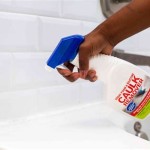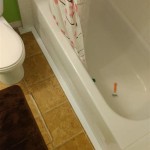How To Clean Venetian Blinds In A Bathtub
Venetian blinds, with their horizontal slats, offer a classic and versatile window covering solution, providing control over light and privacy. However, their intricate design also makes them prone to accumulating dust, grime, and even mold, especially in humid environments like bathrooms or kitchens. Regular cleaning is essential to maintain their appearance and hygiene. While various cleaning methods exist, utilizing a bathtub for cleaning Venetian blinds offers a thorough and effective option, particularly for heavily soiled or multiple blinds. This article provides a detailed guide on how to clean Venetian blinds in a bathtub, ensuring a safe and efficient process.
Before embarking on the cleaning process, preparation is crucial. Gather the necessary materials and assess the condition of the blinds. This initial step sets the stage for a successful cleaning outcome and prevents potential damage to the blinds or the surrounding environment.
Preparation: Materials and Assessment
The first step involves gathering the necessary cleaning supplies. A mild dish soap or a specialized blind cleaner should be selected. Avoid harsh chemicals like bleach or abrasive cleaners, as these can damage the blind's finish and material. A soft-bristled brush or sponge will be needed for gentle scrubbing. Microfiber cloths are ideal for wiping down the blinds without leaving streaks or lint. A bathtub with a drain stopper is essential, as is a source of warm water. Additionally, a screwdriver might be required for removing the blinds from their brackets, depending on the installation method. Safety precautions include wearing gloves to protect hands from cleaning solutions and potential irritants. Consider using a mask if dealing with mold or dust allergies.
Once the materials are assembled, it is important to assess the condition of the Venetian blinds. Examine the slats for excessive dust buildup, grease stains, or mold growth. Note any areas that require special attention or pre-treatment. Identifying these problem areas beforehand allows for a more targeted cleaning approach. Inspect the lifting cords and tilting mechanisms for any signs of damage or fraying. If the cords are excessively worn or frayed, replacing them before cleaning is recommended to prevent them from breaking during the process. Also, evaluate the material of the blinds. Wooden blinds require more delicate handling compared to aluminum or vinyl blinds. Understanding the material composition will inform the choice of cleaning solutions and techniques.
Disconnecting the blinds from the window frame is the next crucial step. This allows for easier handling and more thorough cleaning within the bathtub. The removal process typically involves releasing the blinds from their headrail brackets.
Removal and Tub Preparation
The process of removing Venetian blinds from their brackets varies depending on the installation method. Most blinds are held in place by spring-loaded brackets or simple clips. Carefully examine the headrail for any release mechanisms. Gently push or slide the headrail to disengage it from the brackets. If screws are used, carefully remove them with a screwdriver. It is advisable to have an assistant help with removing larger blinds to prevent them from falling and potentially getting damaged. Once the blinds are detached, set them aside on a protected surface, such as a drop cloth or a sheet, to prevent scratching or damage. Remember to keep track of any small parts, such as screws or end caps, to ensure they are not lost during the cleaning process.
Before placing the blinds in the bathtub, it is essential to prepare the tub itself. Thoroughly clean the bathtub to remove any existing soap scum or grime. This prevents contaminating the cleaning solution with debris from the tub. Place a towel or a non-slip mat at the bottom of the bathtub to cushion the blinds and prevent them from scratching the tub surface. Close the drain stopper securely to prevent water from leaking. Next, fill the bathtub with lukewarm water. Avoid using hot water, as it can damage certain blind materials. Add a small amount of mild dish soap or a specialized blind cleaner to the water. The concentration of the cleaning solution should be relatively low to prevent residue buildup on the blinds. Agitate the water to evenly distribute the soap and create a soapy solution ready for cleaning the blinds.
With the blinds removed and the tub prepared, the actual cleaning process can commence. This involves carefully submerging the blinds, gently scrubbing the slats, and thoroughly rinsing them to remove all traces of soap and grime.
Cleaning and Drying the Blinds
Carefully submerge the Venetian blinds into the prepared bathtub. Ensure that all the slats are fully immersed in the soapy water. Allow the blinds to soak for approximately 15-20 minutes. This soaking period allows the cleaning solution to loosen the accumulated dirt and grime. Use the soft-bristled brush or sponge to gently scrub each slat, paying particular attention to areas with heavy dirt or stains. Avoid applying excessive pressure, as this can damage the slats or the lifting cords. For stubborn stains, consider using a paste made from baking soda and water. Apply the paste to the stain, let it sit for a few minutes, and then gently scrub it away. Clean both sides of each slat, working from top to bottom. Pay close attention to the edges and corners, where dirt tends to accumulate. Regularly rinse the brush or sponge to remove any accumulated dirt and grime. If the cleaning solution becomes excessively dirty, drain the bathtub and refill it with fresh soapy water to ensure effective cleaning.
Once the slats have been thoroughly scrubbed, drain the soapy water from the bathtub and rinse the blinds with clean, lukewarm water. Repeat the rinsing process until there are no traces of soap residue. Soap residue can attract dust and grime, negating the cleaning efforts. Gently shake the blinds to remove excess water. Use a clean microfiber cloth to wipe down each slat, further removing excess water and preventing water spots. After wiping down the slats, hang the blinds to dry. The ideal location for drying is a well-ventilated area outdoors or a shower rod. Ensure that the blinds are fully extended to allow for even drying. Place towels underneath the drying blinds to catch any drips. Allow the blinds to dry completely before reinstalling them. The drying process can take several hours, depending on the humidity and ventilation. Avoid using a hairdryer or other heat source to speed up the drying process, as this can warp or damage the blinds.
After the blinds are completely dry, reinstall them back onto the window frame. This involves reversing the removal process, ensuring that the headrail is securely attached to the brackets. Inspect the lifting cords and tilting mechanisms to ensure they are functioning properly. Regularly cleaning Venetian blinds using the bathtub method helps maintain their appearance, hygiene, and longevity. This process helps to remove accumulated dust, grime, and mold, ensuring a cleaner indoor environment and extending the life of the window coverings.

How To Clean Venetian Blinds Transform Your Living Space

How To Clean Fabric Blinds In A Bathtub 12 Easy Steps

How To Clean Vertical Blinds A Complete Guide

3 Easy Ways To Clean Vinyl Blinds Step By Guide Prudent Reviews

How To Clean Aluminium Venetian Blinds That Are Heavily Stained Or Grimy English

How To Clean Fabric Blinds In A Bathtub 12 Easy Steps

How To Clean Fabric Blinds In A Bathtub 12 Easy Steps

How To Clean Vertical Blinds A Complete Guide

How To Clean Faux Wood Blinds In The Bathtub English

5 Ways To Clean A Venetian Blind Wikihow
Related Posts








